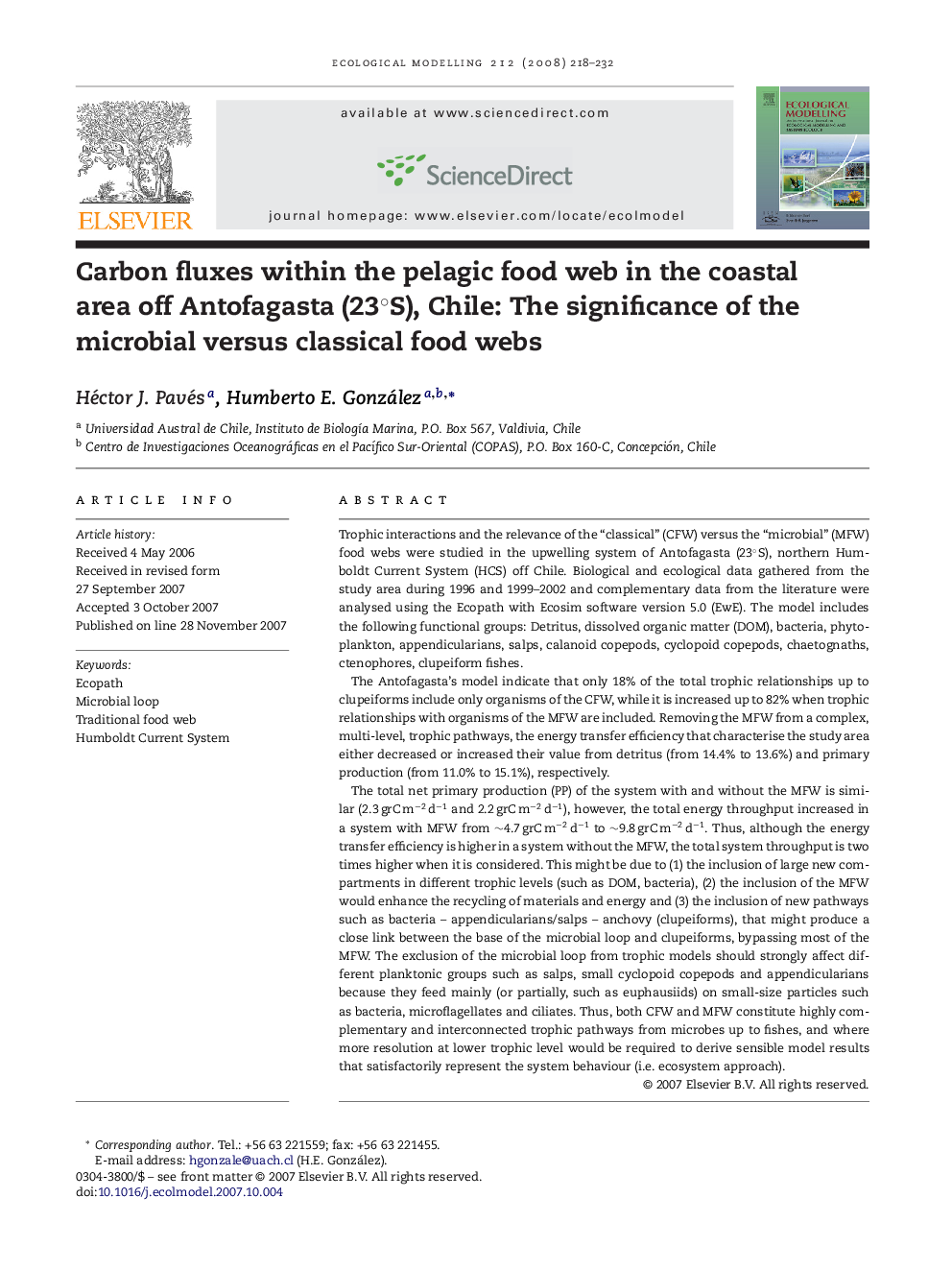| Article ID | Journal | Published Year | Pages | File Type |
|---|---|---|---|---|
| 4378304 | Ecological Modelling | 2008 | 15 Pages |
Abstract
The total net primary production (PP) of the system with and without the MFW is similar (2.3Â grCÂ mâ2Â dâ1 and 2.2Â grCÂ mâ2Â dâ1), however, the total energy throughput increased in a system with MFW from â¼4.7Â grCÂ mâ2Â dâ1 to â¼9.8Â grCÂ mâ2Â dâ1. Thus, although the energy transfer efficiency is higher in a system without the MFW, the total system throughput is two times higher when it is considered. This might be due to (1) the inclusion of large new compartments in different trophic levels (such as DOM, bacteria), (2) the inclusion of the MFW would enhance the recycling of materials and energy and (3) the inclusion of new pathways such as bacteria - appendicularians/salps - anchovy (clupeiforms), that might produce a close link between the base of the microbial loop and clupeiforms, bypassing most of the MFW. The exclusion of the microbial loop from trophic models should strongly affect different planktonic groups such as salps, small cyclopoid copepods and appendicularians because they feed mainly (or partially, such as euphausiids) on small-size particles such as bacteria, microflagellates and ciliates. Thus, both CFW and MFW constitute highly complementary and interconnected trophic pathways from microbes up to fishes, and where more resolution at lower trophic level would be required to derive sensible model results that satisfactorily represent the system behaviour (i.e. ecosystem approach).
Related Topics
Life Sciences
Agricultural and Biological Sciences
Ecology, Evolution, Behavior and Systematics
Authors
Héctor J. Pavés, Humberto E. González,
